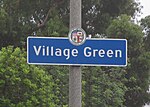Baldwin Hills/Crenshaw, Los Angeles
Baldwin Hills, Los AngelesBaldwin Hills (mountain range)Commons category link is locally definedCrenshaw, Los AngelesNeighborhoods in Los Angeles ... and 1 more
South Los Angeles

Baldwin Hills/Crenshaw is a neighborhood in the south region of the city of Los Angeles. It is divided between the upscale, principally home-owning Baldwin Hills residential district to the south and a more concentrated apartment area Crenshaw District to the north, just south of Exposition Boulevard. A commercial corridor along Crenshaw Boulevard includes Baldwin Hills Crenshaw Plaza, Marlton Square and Crenshaw Boulevard.
Excerpt from the Wikipedia article Baldwin Hills/Crenshaw, Los Angeles (License: CC BY-SA 3.0, Authors, Images).Baldwin Hills/Crenshaw, Los Angeles
South Sycamore Avenue, Los Angeles West Adams
Geographical coordinates (GPS) Address Nearby Places Show on map
Geographical coordinates (GPS)
| Latitude | Longitude |
|---|---|
| N 34.020041666667 ° | E -118.35661388889 ° |
Address
South Sycamore Avenue 3692
90016 Los Angeles, West Adams
California, United States
Open on Google Maps








